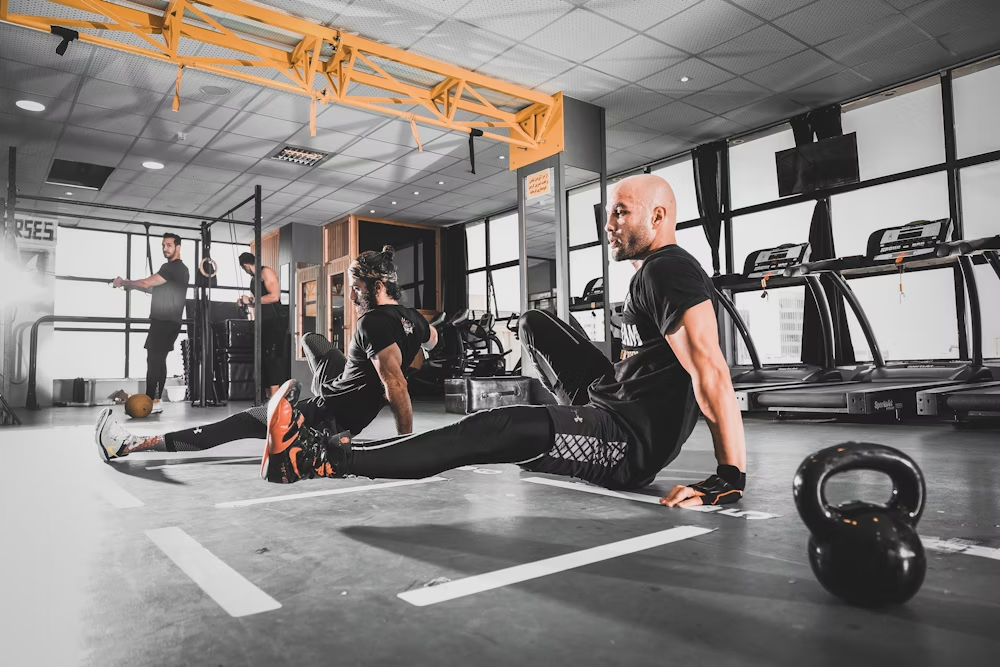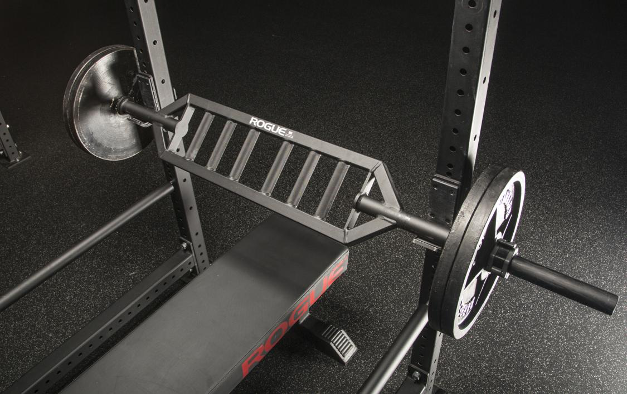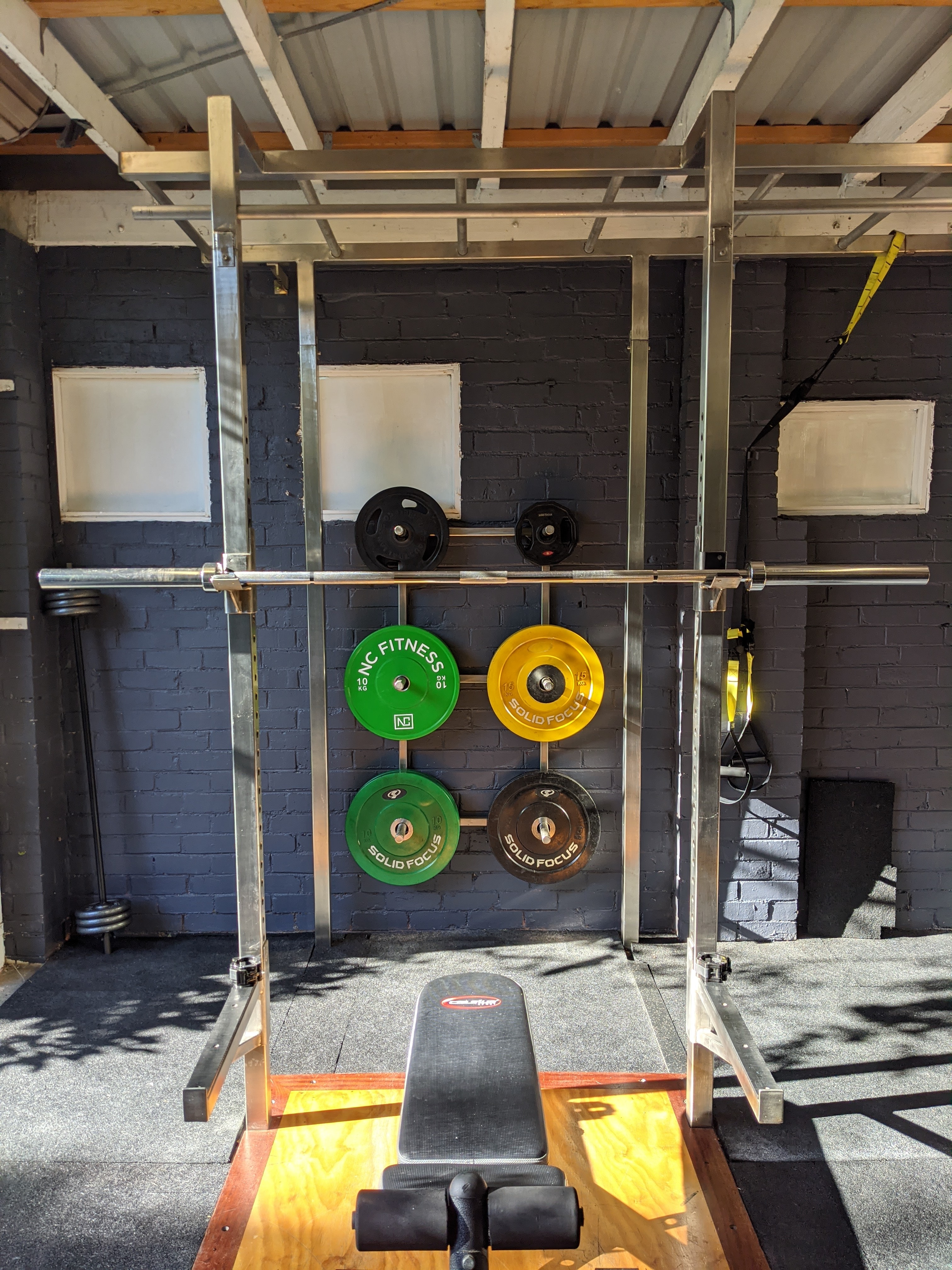Home / Category / Effective Techniques on How to Relieve Sore Muscles after Workout
Effective Techniques on How to Relieve Sore Muscles after Workout

Table of Content
Waking up with stiff, aching muscles after a gym session can feel like a rite of passage for novices pounding the weights for the first time. But what if I told you that this common phenomenon, known as Delayed Onset Muscle Soreness (DOMS), is more than just a badge of effort?
How to relieve sore muscles after workout is a question that plagues many, especially after we introduce our bodies to new exercises or step up the intensity, resulting in tiny tears in muscle tissue that need healing. Addressing this discomfort is key to sustaining a healthy and continuous workout regimen. Understanding the underlying causes of post-workout pain, particularly as we embark on our fitness journeys for the first time, can help us take proactive steps to ease muscle pain after exercise and smoothen our path to achieving our health goals.
As we dive into the mechanics of muscle recovery, I will share with you effective strategies that go beyond mere pain relief. We'll explore how a proper warm-up routine and a sensible, gradual increase in workout intensity allows muscles to adapt, reducing the chances of soreness.
In our journey together through this article, we’ll uncover the importance of nutrition for recovery, the impact of hydration on muscle recuperation, and active recovery techniques that keep us moving forward. I'll introduce you to practices such as foam rolling and stretching, which cater specifically to how to relieve sore calf muscles after workout, and also discuss the broader spectrum of reducing muscle soreness overall. Let's embark on this educational path where I will equip you with the necessary tools to address and manage your post-exercise discomfort effectively.
Understanding Muscle Soreness
When we talk about how to relieve sore muscles after a workout, it's essential to understand what we're dealing with. Delayed Onset Muscle Soreness, or DOMS, is the technical term for the muscle pain and stiffness that sets in after a particularly challenging exercise session. Here's what you need to know:
-
DOMS Basics: This discomfort typically begins to rear its head 12-24 hours post-exercise and reaches its peak around 48 hours after your workout. It's the result of micro-tears in the muscle fibers, which are part of the muscle strengthening process. Remember, experiencing DOMS is not an indicator of a better workout; it's just a sign that your muscles are adapting to new stressors.
-
Causes of DOMS: Contrary to popular belief, the soreness isn't caused by lactic acid buildup; that's a separate phenomenon associated with the burn you feel during intense exercise, which quickly dissipates once you stop the activity. Instead, DOMS is particularly linked to eccentric exercises, those where the muscles lengthen while contracting, like the downward motion of a bicep curl or running downhill.
-
Recognizing DOMS Symptoms: If you're feeling muscle pain, tenderness, and a reduced range of motion, chances are you're experiencing DOMS. You might also notice some swelling and a temporary loss of muscle strength. These symptoms are all part of the body's natural healing process.
As we explore how to ease muscle pain after exercise, consider integrating a variety of strategies into your routine:
Hydration: Keeping well-hydrated is crucial for muscle recovery.
Self-Myofascial Release: Techniques such as foam rolling can help relieve tension and improve blood flow.
Nutrition: Proper nutrition provides the building blocks for muscle repair.
Sleep: Never underestimate the power of a good night's rest for muscle recovery.
Light Exercise: Engaging in light, non-strenuous activity can actually help alleviate soreness.
Avoid NSAIDs: While it might be tempting to reach for over-the-counter pain relief, it's better to avoid NSAIDs as they can impede muscle recovery.
By understanding the mechanics behind muscle soreness and incorporating these strategies, we can learn how to relieve sore calf muscles after workout and reduce muscle soreness overall. Remember, the goal is not just to alleviate discomfort but to foster a sustainable and enjoyable fitness journey.
Warm-Up and Cool-Down Strategies
As we continue our exploration of how to relieve sore muscles after a workout, let's delve into the critical role of warm-up and cool-down strategies. These are not mere bookends to your workout routine; they are essential practices that can significantly enhance your recovery and performance.
Warm-Up Strategies
Start with Light Cardio: Begin your workout with a 5-10 minute light cardiovascular activity. This could be a brisk walk, a gentle cycle, or a slow jog. The aim is to increase body temperature and improve blood flow, making your muscles more pliable and ready for the workout ahead.
Dynamic Stretching: After your light cardio, transition into dynamic stretches. These are active movements where you're not holding a position, but rather gently taking your body through ranges of motion that will be utilized in your upcoming activity. For instance, leg swings, arm circles, and lunges are excellent dynamic stretches that prepare your body for exercise by mimicking the movements of your workout.
Cool-Down Strategies
Gradual Reduction of Activity: Immediately following your workout, spend about 5-10 minutes gradually reducing the intensity of your activity. If you've been running, for example, taper off to a jog and then a walk. This helps to prevent blood from pooling in your extremities and assists your body in returning to its normal state.
Static Stretching: Now is the time for static stretches, where you hold a stretch position for 15-30 seconds. Focus on the major muscle groups that you've used during your workout. This practice not only helps to reduce muscle soreness but also promotes flexibility and can aid in the prevention of future injuries.
Incorporating these warm-up and cool-down strategies into your routine is a smart move for any gym novice looking to reduce muscle soreness and enhance overall performance. Remember, how to relieve sore muscles after the first workout is not just about what you do during the workout, but also what you do before and after. By giving your muscles the attention they need at every stage, you're setting the stage for a quicker recovery and a more effective fitness journey.
Nutrition for Recovery
In the quest to understand how to relieve sore muscles after a workout, we cannot overlook the pivotal role of nutrition. It's the cornerstone of recovery, helping to mend those hard-worked muscles and replenish energy stores. Let's dive into the specifics:
-
Post-Workout Nutrition Essentials: After pushing our limits, our muscles are primed for repair and recovery. That's where the dynamic duo of carbohydrates and protein come into play. They work together to reduce muscle protein breakdown, boost muscle protein synthesis, and restore glycogen stores. To maximize these benefits, aim for a post-workout meal with an optimal carbs-to-protein ratio of 3:1. This translates to about 40 grams of protein paired with 120 grams of carbs. This combination is a game-changer for recovery, helping you bounce back faster and stronger for your next workout session.
-
Timing is Key: When it comes to recovery, timing isn't just a suggestion; it's a critical component. The window of opportunity for peak muscle recovery begins to close shortly after your workout, so it's recommended to consume your post-workout meal within 45 minutes. This is when your muscles are most receptive to the nutrients that aid in repair and growth, making it a prime time to fuel up.
-
Hydration and Recovery: As we've touched on the importance of hydration before, it's worth reiterating that proper hydration is essential before, during, and after exercise. It's not just about quenching your thirst; it's about ensuring that your muscles have the fluid they need to function optimally and recover efficiently.
Here are some food suggestions to incorporate into your post-workout routine, each chosen for their nutrient content and recovery benefits:
-
Anti-Inflammatory and Antioxidant-Rich Foods:
- Tart cherry juice – known for its anti-inflammatory properties.
- Watermelon or watermelon juice – hydrating and rich in antioxidants.
- Fatty fish like salmon – packed with omega-3 fatty acids.
- Pomegranate and beet juices – full of nutrients that support muscle recovery.
- Coffee – in moderation, can aid in reducing muscle pain post-exercise.
-
Muscle Recovery Powerhouses:
- Dairy products like cottage cheese or yogurt – high in protein and calcium.
- Starchy vegetables such as sweet potatoes and squash – excellent sources of carbohydrates and vitamins.
- Spinach and other leafy greens – loaded with iron and other essential nutrients.
- Nuts and seeds – for a healthy dose of fats and protein.
- Turmeric – its curcumin content has potent anti-inflammatory effects.
Each of these foods brings something unique to the table, from anti-inflammatory properties to essential nutrients, all contributing to a more effective recovery. By integrating these foods into your post-workout plan, you're not just learning how to ease muscle pain after exercise, but you're also setting the stage for improved performance in your future workouts. Remember, how to relieve sore muscles after the first workout is as much about what you eat as it is about how you exercise. So next time you finish a session, reach for a protein shake with banana or a delicious salmon with sweet potato dish and know you're on the right track to reduce muscle soreness and boost recovery.
Hydration and Its Impact on Muscle Recovery
When considering how to relieve sore muscles after a workout, hydration emerges as a crucial element in muscle recovery. Here's how it works:
-
Hydration and Muscle Protein Synthesis: Just as a car needs oil to run smoothly, our muscles require water to repair and grow. Dehydration can put a wrench in the works by slowing down muscle protein synthesis. When we're properly hydrated, our bodies can efficiently carry out the repair and growth processes that are vital after an intense workout. It's a foundational step in ensuring our muscles bounce back, ready for the next challenge.
-
Water's Role in Digestion and Nutrient Absorption: After we've pushed our limits, eating the right foods is only part of the equation. Our bodies need water to effectively break down these nutrients. Saliva, which is mostly water, starts the digestion process, and without adequate hydration, our bodies struggle to absorb the proteins and carbohydrates we consume. This can lead to less effective muscle repair and longer recovery times.
-
Combatting Fatigue: A well-hydrated body is like a well-oiled machine; it runs smoothly and efficiently. Dehydration, on the other hand, can leave us feeling fatigued, as our heart has to work harder to pump oxygen and nutrients around the body. This not only affects our recovery but also our motivation for future workouts. Staying hydrated helps maintain our energy levels and keeps us ready to tackle our fitness goals.
To dive deeper into the impact of hydration on recovery:
-
Hydration and Heart Rate Recovery: A study from 2012 revealed that individuals who remained hydrated during and after a 90-minute run experienced faster heart rate recovery. This suggests that their bodies were able to handle and recover from the exercise-induced stress more effectively than those who did not hydrate adequately.
-
Rehydration Tips: To ensure you're rehydrating effectively, aim to drink one and a half times the fluid you lost during exercise, spread out over the next two to six hours. This approach replenishes the fluids lost through sweat and helps maintain the balance necessary for optimal muscle recovery.
-
Hydration for Inflammation and Swelling: Proper hydration goes beyond just refilling your water levels; it plays an active role in reducing inflammation and swelling post-injury. By keeping the body hydrated, we facilitate increased blood flow to the injured area, which is essential for delivering nutrients needed for repair and for the removal of waste products.
Incorporating these hydration strategies into your recovery routine can significantly reduce muscle soreness and aid in faster recovery. Let's not forget the importance of hydration for joint health as well. The cartilage in our joints is composed of up to 80% water, providing the cushioning and shock absorption we need during physical activities. For optimal joint health and overall hydration, men should aim for about 15.5 cups and women for 11.5 cups of fluids daily from water, other beverages, and food.
For those of us pushing our limits, advanced hydration options like Pedialyte Sport can be a game-changer. With five key electrolytes and significantly less sugar than leading sports drinks, it's designed to help maintain peak performance and support proper recovery.
Remember, how to relieve sore muscles after workout, how to relieve sore muscles after first workout, how to ease muscle pain after exercise, and how to relieve sore calf muscles after workout all start with a simple yet powerful tool: hydration. So next time you finish that grueling session, make sure to reach for your water bottle—it's your first step towards a quicker, more effective recovery and ultimately, reduced muscle soreness.
Active Recovery Techniques
In our pursuit of how to relieve sore muscles after workout, let's not overlook the powerful strategy of active recovery. This technique is not only about giving your body a chance to rest; it's about engaging in specific, low-intensity exercises that facilitate muscle healing and reduce soreness. Here's how you can incorporate active recovery into your regimen:
Low-Intensity Exercises for Active Recovery
- Light Cardio: A gentle jog or a session of swimming can keep the blood flowing without overtaxing your muscles. This increased circulation helps flush out toxins and brings in fresh nutrients essential for muscle repair.
- Yoga: With its focus on stretching and breath control, yoga is an excellent way to enhance flexibility and reduce muscle tension. It also aids in mindfulness, which can be beneficial for overall recovery.
- Foam Rolling: This self-myofascial release technique can work wonders on tight muscles, easing tension and improving blood flow to the areas that need it most.
Timing Your Active Recovery
- Post-Workout: Engage in active recovery exercises right after intense training to maximize the benefits of increased blood flow and nutrient delivery to stressed muscles.
- Non-Workout Days: On days when you're not hitting the gym hard, consider a light active recovery session. This will help keep the muscles limber and reduce any lingering soreness from previous workouts.
Targeted Active Recovery Moves
To specifically address muscle groups that may be more prone to soreness, consider the following movements that help alleviate discomfort and improve mobility:
- Prone Shoulder Sweep: Great for addressing tightness in the shoulders and upper back.
- Reach and Rotate Opener: This move helps open up the chest and shoulders, promoting better posture and reducing soreness.
- Cat-Cow: A yoga staple that enhances spinal flexibility and can help ease lower back stiffness.
- Reverse Lunge: This exercise not only stretches the hip flexors but also engages the glutes and hamstrings gently.
- Quad Hip Stretch: Ideal for those who experience soreness in their quads after a heavy leg day.
- Lying Hamstring Stretch: A focused stretch that targets the back of the thighs, perfect for runners and cyclists.
- Plank to Toe Tap: Engages the core while also stretching the hamstrings and calves.
Full-Body Active Recovery Workouts
Incorporate a full-body active recovery workout to keep all your muscle groups engaged and speed up the recovery process:
- TRX Push-Ups: Engages the chest, shoulders, and core without the full intensity of traditional push-ups.
- TRX Squat + Row: A compound move that works the legs and back while keeping the intensity low.
- TRX Forward Lunge + Fly: Targets the lower body and opens up the chest and shoulders.
- Straight Arm Pulldown: This resistance band exercise is gentle on the muscles but effective in promoting blood flow.
- Band Anti Rotation Hold: Strengthens the core with minimal impact.
- Plank: A core stabilizer that, when performed gently, can aid in recovery without causing additional strain.
By integrating these active recovery workouts into your routine, you're not just learning how to relieve sore muscles after the first workout; you're also ensuring that your body remains primed and ready for your next session. Remember, how to ease muscle pain after exercise and how to relieve sore calf muscles after workout isn't solely about rest; it's about smart, strategic movement that keeps you progressing without setbacks. So next time you're pondering how to reduce muscle soreness, consider active recovery as your ally on the road to recovery and improved fitness.
Conclusion
Throughout this exploration of muscle recovery tactics, we have equipped ourselves with diverse strategies to combat the discomfort of sore muscles after exercising. From the initial step of a thorough warm-up to the critical importance of post-workout nutrition and hydration, each technique works in concert to bolster the body's natural healing process. We've also underscored the significance of including active recovery methods, ensuring that easing muscle pain is not merely about rest, but about applying gentle, restorative practices to maintain and enhance our fitness journey.
As we implement these well-rounded approaches into our workout routines, we lay the foundation for a sustainable and enjoyable path towards our health and fitness aspirations. Whether you're a gym newcomer or a seasoned athlete, these insights provide a blueprint for effective post-exercise recovery. Remember, the key to continual progress and reduced muscle soreness lies in listening to your body, nurturing it with the appropriate care, and staying committed to an informed and holistic regimen.
FAQs
What can be done to alleviate muscle soreness after working out? To reduce muscle soreness following exercise, you should keep moving as activity promotes circulation. Warm up before exercising, increase workout intensity gradually, consider a salt bath, use pain relievers if necessary, schedule recovery time, and experiment with a split-day workout routine.
How long does soreness typically last for gym beginners? For individuals new to the gym, muscle soreness can last between 2 to 5 days. This is common among all fitness levels, especially after engaging in new or more intense activities. The discomfort usually resolves on its own, and self-care measures can help alleviate symptoms.
Is it okay to exercise when my muscles are sore? When experiencing soreness, it's advisable to engage in light activities, such as walking, to allow muscles to rest. Remedies like ice, anti-inflammatory medications, massages, warm baths, or gentle stretching can provide relief.
What are effective ways to recover muscles after an initial workout? To expedite muscle recovery, drink at least 2 liters of water daily, take rest days, aim for 7-9 hours of sleep each night, consume protein with every meal, stretch post-workout, and incorporate light movement to enhance blood flow, even when muscles are sore.
What practices can accelerate muscle recovery? Reducing stress, getting quality sleep, engaging in both passive and active recovery, massages, foam rolling, wearing compression garments, and applying hot and cold therapies can all contribute to faster muscle recovery. Adequate nutrition and hydration are also essential.
How can I make muscle soreness dissipate more quickly? Applying ice or heat therapy within an hour after exercising can alleviate muscle aches. Ice baths may provide pain relief for up to 24 hours, while heating pads may offer comfort for more than 24 hours. It's beneficial to start with ice therapy and switch to heat as muscle soreness intensifies.
Is it safe for a beginner to work out with sore muscles? Working out with mild soreness is generally safe. Engaging in 'active recovery,' which includes light resistance exercises or low-intensity cardio activities such as walking or swimming, can be particularly beneficial.
What beverages can help with muscle soreness? The best drinks for muscle recovery include tart cherry juice, watermelon juice, fatty fish oils, pomegranate juice, beet juice, whey protein shakes, and dairy products. These beverages provide nutrients that aid in recovery and reduce soreness.
Can I go for a run if my legs are sore from doing squats? Running with mild delayed onset muscle soreness (DOMS) from activities like squats is acceptable. To improve symptoms, ensure proper hydration and engage in new movements with low volume, weight, and intensity.
How many rest days should I take each week? Most individuals should aim for 1 to 3 rest days per week. Use these days for light exercise and mobility work to aid recovery. Listen to your body and take additional rest days if you feel unusually fatigued or experience persistent aches and pains.
How long should beginners allow for muscle recovery? Beginners are advised to rest for 72 hours before exercising the same muscle group again to prevent injury and allow for adequate muscle recovery and growth. Overtraining or insufficient recovery time can lead to injuries that may cause significant setbacks.











